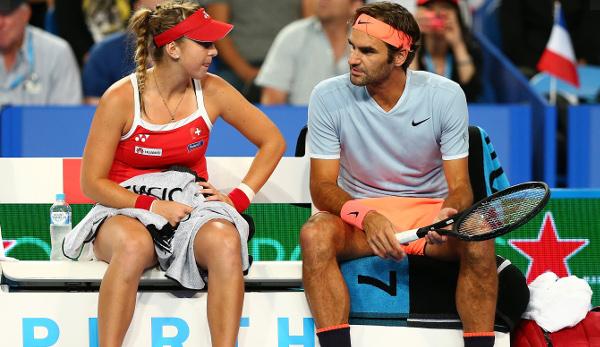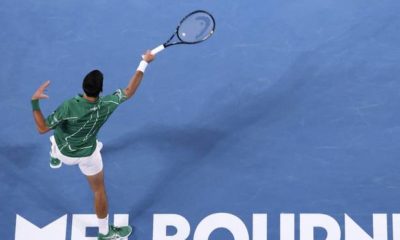Many hobby players don’t know much about the pauses between the changes of sides. With these three ideas you can use the 90 seconds effectively for yourself.
It’s 1 to 4. You sit down on the bench, drink a sip of the warm apple spritzer, pull your face and get up again. This ritual, if you take your time, takes 30 seconds. At the baseline, you get ready to return to be surprised again by the serve with slice to the outside – similar to the service games before.
The match then splashes along like a boring netflix series in which you pay more attention to your smartphone than to the plot. Who staggers carelessly over the course, from serve to serve, from return to return, will never improve his understanding of the game and his match intelligence. On the other hand, those who make careful use of the breaks in a match, ask themselves the right questions and become creative can improve their intelligence on the pitch within a few months.
One minute and 30 seconds you officially have time to recover every time you change sides and still sit. We don’t have to talk about the fact that hardly anyone uses this time in the hobby area. Usually both players get up again after 45 seconds at the latest to continue the game. Apart from the fact that you waste so valuable time to recover physically, the mental aspect of changing sides is almost completely neglected. If the time on the bench is used at all, then around itself to annoy or with reproaches to slap.
It’s amazing that this approach doesn’t lead to success, right?! You can use each page break to analyze yourself, the game and your opponent and immediately apply the knowledge gained from your analyses on the court. Hey, that’s awesome, isn’t it? You notice something and can change it immediately. It’s only possible on the tennis court and only when changing sides. If you come home from work in the evening and you think that you forgot to turn off the printer in the office while having a beer on the couch, you can’t change it within 90 seconds.
Why is it 1:4 from your point of view? Why does your opponent win every service so smoothly? Why can your opponent score so regularly with his forehand from the half field? Why do you stand so far behind the baseline in every rally? How did your opponent score the most points? Were they mistakes by you or direct points by him? If you made a lot of mistakes, how did you make those mistakes? Were the mistakes forced, or were many of them unconstrained?
If you regularly ask yourself”W” questions when changing sides, the answers sometimes hurt a little, you’ll get honest results that you can work on as the game progresses. Only if you understand the effects on the court can you work on their cause. Running headlessly across the court and letting everything just go over you is even worse than asking yourself uncomfortable questions.
Replace the three points with your favourite player. I assume you’ve watched your hero a lot at work on TV. You must have seen how Roger Federer, for example, stayed calm despite being behind and simply continued his game. Or how Angelique Kerber played her forehand more aggressively after understanding that she was acting too defensively. You will also know the characteristics of your favourite players in terms of body language and general appearance.
You can use this knowledge for yourself when changing pages. If you can’t handle your opponent’s tough first serve and haven’t brought a first serve back into the field, consider how Federer behaves on the return when he proves his genius against the serving giants of the world. Roger is usually close to the baseline and not too far behind to be able to block the serve better. You’re off your rocker and you barely bring a ball into the field? Think what Rafael Nadal would do. He would probably want to regain his safety in the strokes over more height and length.
Of course, you don’t have the playful options of your favorite player. But you can get clues and new, positive influences for your own match.
What exactly does visualization mean? You imagine in as much detail as possible what you will be doing in the very near future. Let’s go over such a visualization based on your serve. You sit on the bench and know that you have to serve right away (or you can, depending on how things are going). When changing sides, you have time to imagine exactly what is important for your serve. If you think about this in detail, your sense of your serve will improve. It’s like you actually did something before you even did it.
Imagine in detail how to stand on the baseline, tap the ball, find the right grip, look over at your opponent and start your service movement. Think about how you just throw the ball up, take the club calmly in the back, build up arch tension, look closely at the ball and get stability in your body.
In the last step you imagine exactly how you hit the ball at the highest point, with your arm stretched out, perfectly in the middle of your club face, first push yourself off the ground with your legs and screw yourself upwards, you can already hear from the sound of the shot that the serve becomes a grenade and then you watch your opponent’s return sailing into the net.
With these three ideas you will be able to shoot 1:4 and at least keep the match exciting and open.














You must be logged in to post a comment Login